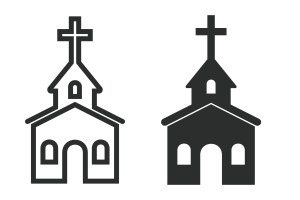
On January 20, the date of the 2017 presidential inauguration in the United States, a new president takes the helm. Immigrants who have been protected from deportation under President Barack Obama are being warned that they may be deported. During his campaign, President-elect Trump has threatened to “immediately terminate” any of President Obama’s executive actions on immigration, leaving many immigrants worried. Trump did soften his tone toward the younger immigrants, many of whom were brought here illegally by parents or came here as youth without the needed paperwork, by saying that, “We’re going to work something out that’s going to make people happy and proud.” However, many advocates are concerned about what will happen when the new president takes office.
Why Are Churches Considered Safe?
In the Jewish law, six Levitical towns were named as sanctuaries where those accused of manslaughter would be safe from blood vengeance. This tradition carried over into Christianity. Churches were considered particularly holy. In medieval times, church sanctuaries were places of refuge and regulated by common law. It was common for the asylum seeker to be placed under the head of the local abbey and made to give up their weapons. Within 40 days, this individual would need to surrender to the authorities, stand trial or confess guilt. Henry VIII changed the rules of asylum, and the system would be abolished in 1623. The tradition of offering sanctuary in the Church is still observed today, but no legal effect is offered. The U.S. Immigration and Customs Enforcement has a policy in place to avoid entering “sensitive locations” like schools, hospitals and churches, except in the cases of terrorism or exigent circumstances.
The Sanctuary Movement
Immigration has long been a political hotbed. Between 1980 and 1991, one million Central Americans sought asylum in the United States. This was due to civil wars in Guatemala and El Salvador and the wake of the Nicaraguan Revolution. The official policy of the Reagan administration made it difficult for immigrants to obtain asylum status. Congress would not allow the United States to send foreign aid to countries that committed human rights abuses, but the Reagan administration provided training and arms to the governments of Central American countries. If the immigrants had been granted asylum based on a “well-founded fear” of persecution, it would have been admitting that the government was abusing its citizens and no more aid would have been sent.
The churches reacted to the policies of the Reagan administration by organizing together in what was known as the “Sanctuary Movement.” It began in 1980 along the border of Mexico and Arizona but quickly spread into Texas and California as well as the cites of Chicago and Philadelphia. The movement was considered to be similar to the Underground Railroad. The churches within the movement were quite diverse and included Quakers, Mennonites, Methodists, Jews, Baptists, Catholics, Lutherans and many others. Even secular groups such as Amnesty International and student organizations embraced the movement.
The Sanctuary Movement died out in the late 1980s, even though it won a 1984 human rights award. The federal government launched an investigation into the movement and initiated criminal prosecutions against many of the activists who were helping immigrants. The trials brought even more attention to the cause of the Central American refugees. In 1990, new legislation was passed to allow Central Americans safe haven in the United States.
The Sanctuary Movement came back strong in the past decade because so many people in the United States have one or more family members in danger of being deported. Churches across the United States are mobilizing to offer sanctuary to immigrants who fear being deported. According to one report, there are at least 450 churches that have pledged to provide living space, rides for schoolchildren and financial assistance to immigrants who do not have documentation. It’s good to know that people are still concerned about undocumented immigrants.

